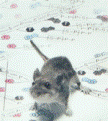Papers in the Biological Sciences

Jay F. Storz Publications
Document Type
Article
Date of this Version
2017
Citation
Storz, Jay F. and Grant B. McClelland (2017). Rewiring metabolism under oxygen deprivation. Science 356 (6335), 248-249. DOI: 10.1126/science.aan1505
Abstract
When faced with a reduced availability of oxygen in the environment (hypoxia), vertebrates can make a variety of respiratory, cardiovascular, and hematological adjustments to ensure an uninterrupted supply of oxygen to the cells of metabolizing tissues (1, 2). These are adaptive solutions for “aerobic organisms in an aerobic world” (3). Coping with the complete absence of oxygen (anoxia) requires more fundamental alterations of cellular metabolism that are typically nothing more than emergency stopgap measures to buy time until the oxygen supply is (hopefully) reestablished (4). On page 307 of this issue [Science 356 (6335)], Park et al. (5) identify a new champion of anoxia tolerance among mammals— the naked mole-rat.
Naked mole-rats (Heterocephalus glaber) cope with an atmosphere of extremely low oxygen and high carbon dioxide in their subterranean burrow systems (see the photo). Because every aspect of naked mole-rat biology seems to be unusual and bizarre in some way, it is perhaps not surprising that they have evolved a particular means of tolerating low oxygen conditions. Park et al. observed that naked mole-rats can tolerate an atmosphere of 5% oxygen for 5 hours without undue stress, whereas mice (Mus musculus) died of asphyxiation in <15 min. Under complete anoxia (0% oxygen), mice and naked mole-rats both quickly lost consciousness. However, whereas mice quickly passed the point of no return and could not be resuscitated even when reexposed to ambient air (21% oxygen) within a minute of the initial anoxia exposure, the naked mole-rats fully recovered from 18 min of complete anoxia. This may not seem like much when compared to turtles or crucian carp, but it is astounding by mammalian standards.
Included in
Biochemistry, Biophysics, and Structural Biology Commons, Biodiversity Commons, Desert Ecology Commons, Evolution Commons, Other Animal Sciences Commons, Zoology Commons


Comments
Copyright 2017 AAAS. Used by permission.